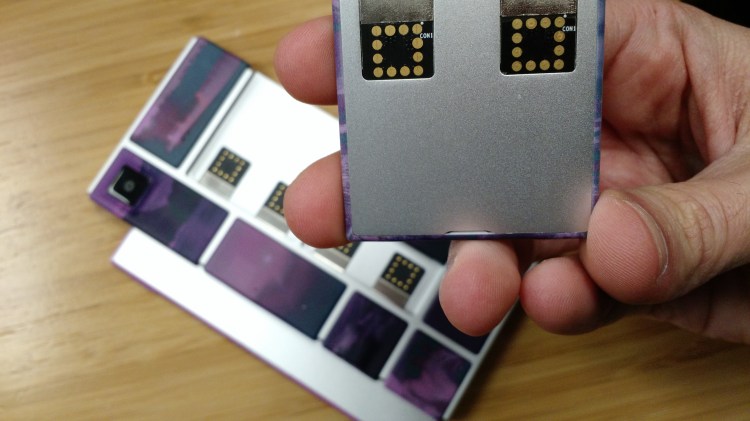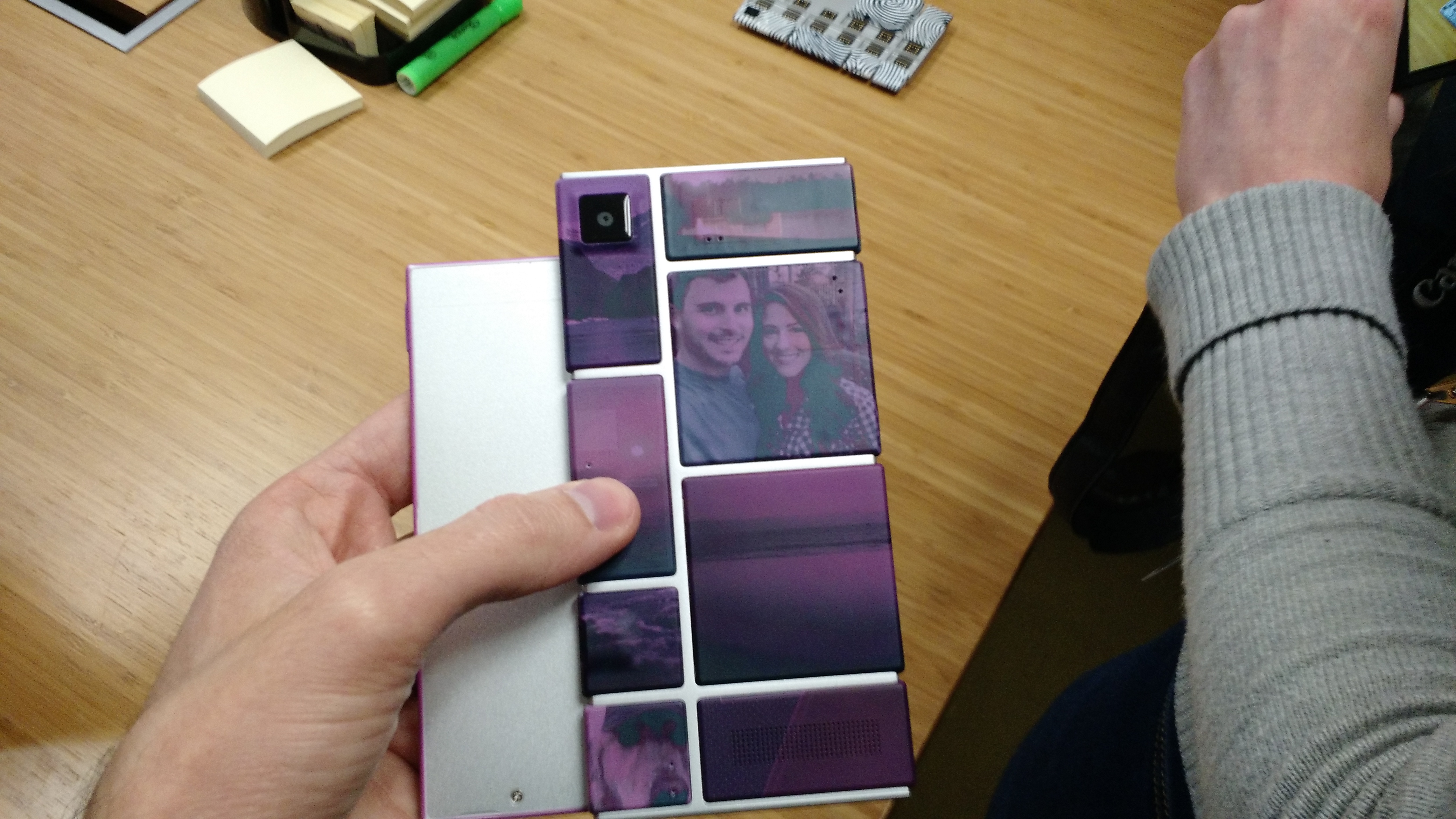MOUNTAIN VIEW, Calif. — The prototype for Google’s Ara modular smartphone is one hell of an instrument, because it lets you pop in the components you actually want. To hold one of these gadgets in your hand is to get a hint about the future of mobile computing. The hardware is personalized, just like the apps on your phone.
I stood in a conference room at Google headquarters and gave a light squeeze to a little slice of a gadget — one piece of a smartphone that ordinarily would be stuffed deep inside a sturdy case, but instead, here, could slide in and out. This is Project Ara in real life.
Everything feels a bit fragile on the latest prototype, dubbed “Spiral 2” — but maybe that’s the point. You can do what you want with it.
It’s like the freedom you got when you could slip an SD card into a digital camera. You could buy one with just a bit of storage at an OK price, or you could choose something more substantive and costly.
The “modules” that snap on to the “exoskeleton” of the Ara Spiral 2 prototype all have different prices and capacities, depending on what you want. You can give the phone a bit of a tug and take out the battery if it’s getting close to dying and put in another. Or you could add in more storage, or a more powerful chip. Even the front of the phone is customizable, with the speaker and the screen.
And plenty more modules should be on the way as Google builds out a developer community for this hardware. Think sensors — and think of a mobile device that does what you want it to.








